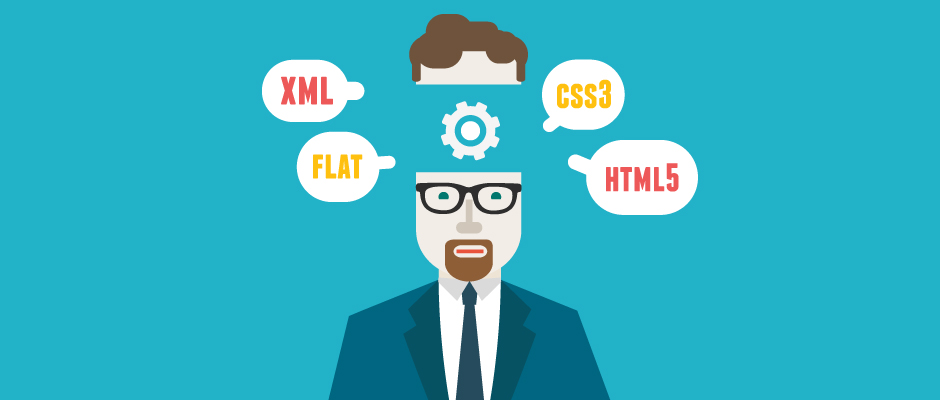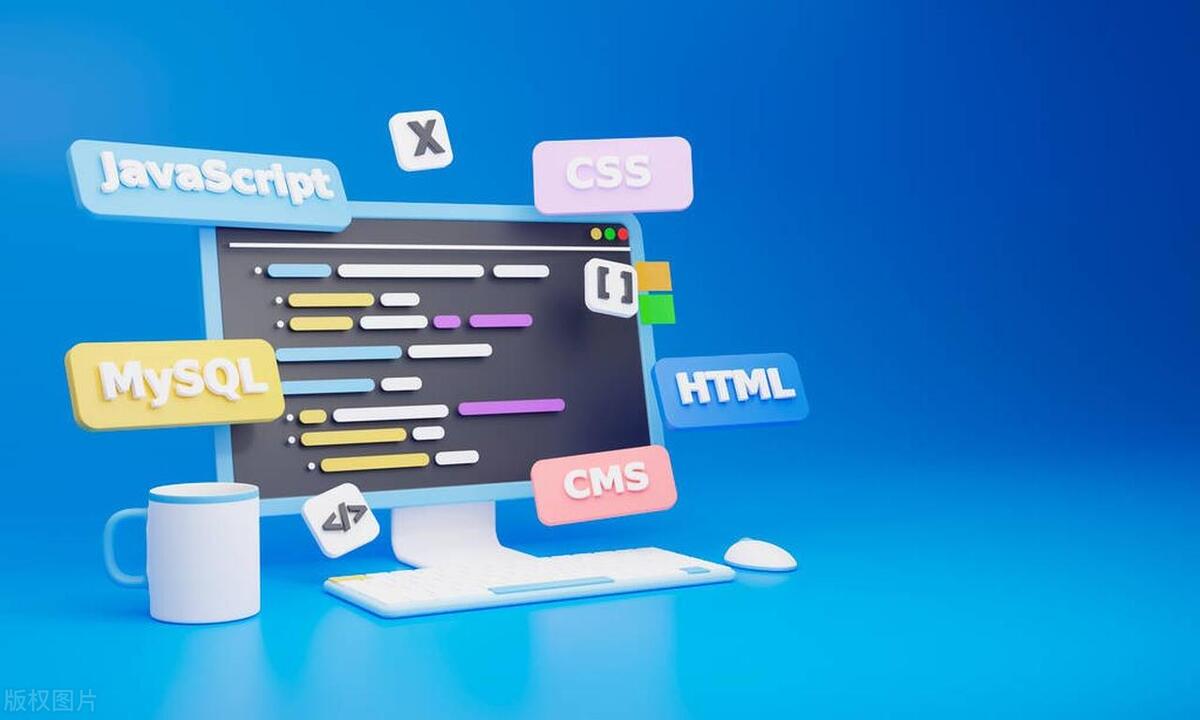CSS Animations and Transitions: A Step-by-Step Guide
Aug 02, 2025 pm 03:00 PMCSS Transitions and Animations enhance the user experience without JavaScript. 1. Use transition to achieve simple state changes, such as color or scaling changes during hover, and control it through transition-property, duration, timing-function and delay. It is recommended to use transform and opacity to improve performance. 2. Use @keyframes to define complex animations, such as fadeInSlideUp or infinite pulse effects, apply through the animation attribute, and you can set delay, iteration-count, direction, fill-mode and play-state for control. 3. Performance optimization suggestions include: prioritizing transform and opacity, avoiding animation layout attributes, rationally using will-change, using translate instead of top/left, and adapting accessibility through prefers-reduced-motion. 4. Select transitions for interactive feedback, and select animations for complex sequences or automatic playback. The combination of the two can create a smooth and responsive interface.

CSS Animations and Transitions are powerful tools for adding subtle (or dramatic) motion to web elements — all without relying on JavaScript. They improve user experience by providing visual feedback, guiding attention, and making interfaces feel more dynamic. Let's walk through both concepts step by step, with practical examples.

1. CSS Transitions: Smooth Property Changes
Transitions are best for simple, state-based changes — like when a button changes color on hover or a menu slides in when clicked.
Key Properties:
-
transition-property: Which CSS property to animate (eg,background-color,transform). -
transition-duration: How long the transition takes (eg,0.3s). -
transition-timing-function: Controls the speed curve (eg,ease,linear,ease-in-out). -
transition-delay: Optional delay before the transition starts.
You can shorthand them using the transition property.

Example: Hover Button Effect
.button {
background-color: #007bff;
color: white;
padding: 10px 20px;
border: none;
transition: background-color 0.3s ease, transform 0.2s ease;
}
.button:hover {
background-color: #0056b3;
transform: scale(1.05);
}? Tip : Use
transformandopacityfor smoother performance — they don't trigger layout or paint reflows.
2. CSS Animations: Full Control with @keyframes
When you need more complex motion — like bouncing, looping, or multi-step effects — use @keyframes and the animation property.

Step 1: Define the Animation with @keyframes
@keyframes fadeInSlideUp {
0% {
opacity: 0;
transform: translateY(20px);
}
100% {
opacity: 1;
transform: translateY(0);
}
}This animation starts hidden and slightly below, then fades in and moves up.
Step 2: Apply the Animation to an Element
.card {
animation: fadeInSlideUp 0.6s ease-out;
}You can also control:
-
animation-delay: Wait before starting. -
animation-iteration-count: How many times (eg,3,infinite). -
animation-direction:normal,reverse,alternate. -
animation-fill-mode: What styles apply before/after (eg,forwardskeeps the final state). -
animation-play-state: Pause/resume withpausedorrunning.
Full Example: Pulsing Loading Indicator
@keyframes pulse {
0% {
transform: scale(0.95);
opacity: 0.7;
}
50% {
transform: scale(1.05);
opacity: 1;
}
100% {
transform: scale(0.95);
opacity: 0.7;
}
}
.loader {
width: 20px;
height: 20px;
background-color: #007bff;
border-radius: 50%;
animation: pulse 1.5s infinite ease-in-out;
}? Note : Animations run as soon as the element loads unless delayed. Use
animation-play-state: pausedto control it via JavaScript later.
3. Best Practices and Performance Tips
Even though CSS animations are performant, misuse can cause jank. Follow these guidelines:
- ? Use
transformandopacity— they're GPU-accelerated. - ? Avoid animating
margin,width,height, ortop/left— they trigger layout reccalculations. - ? Leverage
will-changefor elements you know will animate:.animated-element { will-change: transform, opacity; }(Use sparingly — overuse can hurt performance.)
- ? Prefer
transform: translate()over changingleft/topfor moving elements. - ? Use
prefers-reduced-motionfor accessibility :@media (prefers-reduced-motion: reduce) { * { animation-duration: 0.01ms !important; transition-duration: 0.01ms !important; } }
4. When to Use Transitions vs. Animations
Use Case Choose Hover effects, focus states Transitions Loading spinners, loaders Animations Complex multi-step effects Animations Simple color/scale changes Transitions Infinite loops or sequences Animations Transitions are event-driven (requir a trigger like hover), while animations run independently once applied.
Basically, transitions are your go-to for interactive feedback, and animations give you full control for more expressive motion. Used wisely, they make your site feel poisoned and responsive — without a single line of JavaScript.
The above is the detailed content of CSS Animations and Transitions: A Step-by-Step Guide. For more information, please follow other related articles on the PHP Chinese website!

Hot AI Tools

Undress AI Tool
Undress images for free

Undresser.AI Undress
AI-powered app for creating realistic nude photos

AI Clothes Remover
Online AI tool for removing clothes from photos.

Clothoff.io
AI clothes remover

Video Face Swap
Swap faces in any video effortlessly with our completely free AI face swap tool!

Hot Article

Hot Tools

Notepad++7.3.1
Easy-to-use and free code editor

SublimeText3 Chinese version
Chinese version, very easy to use

Zend Studio 13.0.1
Powerful PHP integrated development environment

Dreamweaver CS6
Visual web development tools

SublimeText3 Mac version
God-level code editing software (SublimeText3)

Hot Topics
 CSS Animation Guide: Teach you step-by-step how to create lightning effects
Oct 20, 2023 pm 03:55 PM
CSS Animation Guide: Teach you step-by-step how to create lightning effects
Oct 20, 2023 pm 03:55 PM
CSS Animation Guide: Teach you step by step how to create lightning effects Introduction: CSS animation is an indispensable part of modern web design. It can bring vivid effects and interactivity to web pages and enhance user experience. In this guide, we’ll take a closer look at how to use CSS to create a lightning effect, along with specific code examples. 1. Create an HTML structure: First, we need to create an HTML structure to accommodate our lightning effects. We can use a <div> element to wrap the lightning effect and provide
 CSS Animation Tutorial: Teach you step-by-step to achieve page turning effects
Oct 24, 2023 am 09:30 AM
CSS Animation Tutorial: Teach you step-by-step to achieve page turning effects
Oct 24, 2023 am 09:30 AM
CSS Animation Tutorial: Teach you step-by-step to implement page turning effects, specific code examples are required CSS animation is an essential part of modern website design. It can add vividness to web pages, attract users' attention, and improve user experience. One of the common CSS animation effects is the page turning effect. In this tutorial, I'll take you step by step to achieve this eye-catching effect and provide specific code examples. First, we need to create a basic HTML structure. The code is as follows: <!DOCTYPE
 CSS Animation Tutorial: Teach you step-by-step to achieve the special effect of flowing water
Oct 21, 2023 am 08:52 AM
CSS Animation Tutorial: Teach you step-by-step to achieve the special effect of flowing water
Oct 21, 2023 am 08:52 AM
CSS Animation Tutorial: Teach you step-by-step to implement the special effect of flowing water. Specific code examples are required. Foreword: CSS animation is a commonly used technology in web design. It makes web pages more lively and interesting and attracts users' attention. In this tutorial, we will learn how to use CSS to achieve a flowing water effect and provide specific code examples. let's start! Step One: HTML Structure First, we need to create a basic HTML structure. Add a <di to the <body> tag of the document
 Tips and methods to use CSS to achieve jitter effects when the mouse is hovering
Oct 21, 2023 am 08:37 AM
Tips and methods to use CSS to achieve jitter effects when the mouse is hovering
Oct 21, 2023 am 08:37 AM
Tips and methods to use CSS to achieve jitter effects when the mouse is hovering. The jitter effects when the mouse is hovering can add some dynamics and interest to the web page and attract the user's attention. In this article, we will introduce some techniques and methods of using CSS to achieve mouse hover jitter effects, and provide specific code examples. The principle of jitter In CSS, we can use keyframe animation (keyframes) and transform properties to achieve the jitter effect. Keyframe animation allows us to define an animation sequence by
 CSS Animation Tutorial: Teach you step by step how to implement pulse effects
Oct 21, 2023 pm 12:09 PM
CSS Animation Tutorial: Teach you step by step how to implement pulse effects
Oct 21, 2023 pm 12:09 PM
CSS Animation Tutorial: Teach you step-by-step to implement pulse effects, specific code examples are required. Introduction: CSS animation is a commonly used effect in web design. It can add vitality and visual appeal to web pages. This article will give you an in-depth understanding of how to use CSS to achieve pulse effects, and provide specific code examples to teach you how to complete it step by step. 1. Understand the pulse effect. The pulse effect is a cyclic animation effect. It is usually used on buttons, icons or other elements to give it a beating and flashing effect. Animating properties and keys via CSS
 CSS Animation Tutorial: Teach you step-by-step to achieve the fade-in and fade-out effect
Oct 18, 2023 am 09:22 AM
CSS Animation Tutorial: Teach you step-by-step to achieve the fade-in and fade-out effect
Oct 18, 2023 am 09:22 AM
CSS Animation Tutorial: Teach you step-by-step to implement the fade-in and fade-out effect, including specific code examples. In web design and development, animation effects can make the page more vivid and attractive. CSS animation is a simple and powerful way to achieve this effect. This article will teach you step by step how to use CSS to achieve the fade effect, and provide specific code examples for reference. 1. Fade-in effect The fade-in effect refers to the effect in which an element gradually changes from a transparency of 0 to a transparency of 1. Here are the steps and code example to achieve the fade-in effect: Step 1:
 Exploring CSS animation properties: transition and transform
Oct 20, 2023 pm 03:54 PM
Exploring CSS animation properties: transition and transform
Oct 20, 2023 pm 03:54 PM
Exploration of CSS animation properties: transition and transform In web development, in order to increase the interactivity and visual effects of web pages, we often use CSS animation to realize the transition and transformation of elements. In CSS, there are two commonly used properties that can achieve animation effects, namely transition and transform. This article will explore the use of these two properties in depth and give specific code examples. 1. Transition attribute transitio
 Tips and methods for using CSS to achieve special effects for image display
Oct 24, 2023 pm 12:52 PM
Tips and methods for using CSS to achieve special effects for image display
Oct 24, 2023 pm 12:52 PM
Tips and methods for using CSS to achieve special effects for image display. Whether it is web design or application development, image display is a very common requirement. In order to improve the user experience, we can use CSS to achieve some cool image display effects. This article will introduce several commonly used techniques and methods, and provide corresponding code examples to help readers get started quickly. 1. Picture zoom special effects Zoom mouse hover effect When the mouse is hovering over the picture, the interactivity can be increased through the zoom effect. The code example is as follows: .image-zoom{






